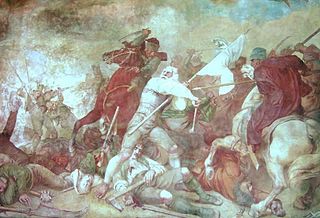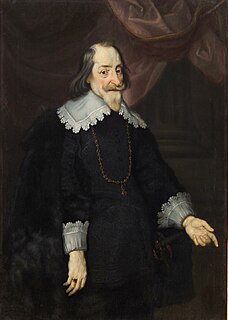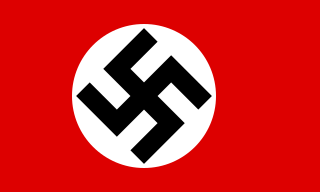 W
WThe Bavarian uprising of 1705–06 was a revolt against the occupation of the Electorate of Bavaria by the forces of the Austrian Habsburgs during the War of Spanish Succession (1701–14). It lasted from early November 1705 to 18 January 1706, approximately 75 days. Henric L. Wuermeling speaks of this as "the first revolution of modern history."
 W
WThe Braunau Parliament is the name of the congress on the defence of the state of Bavaria held at Braunau am Inn convened on 21 December 1705, during the War of the Spanish Succession and often seen as the precursor of the Bavarian parliament.
 W
WBurg Clam is a castle in Upper Austria, Austria. Burg Clam is 337 metres (1,106 ft) above sea level.
 W
WBurg Pürnstein is a castle in Upper Austria, Austria. Burg Pürnstein is 537 metres (1,762 ft) above sea level.
 W
WBurg Vichtenstein is a castle in Upper Austria, Austria. Burg Vichtenstein is 531 metres (1,742 ft) above sea level.
 W
WEbensee was a subcamp of Mauthausen concentration camp established by the SS to build tunnels for armaments storage near the town of Ebensee, Austria, in 1943. The camp held a total of 27,278 male inmates from 1943 until 1945. Between 8,500 and 11,000 prisoners died in the camp, most from hunger or malnutrition. Political prisoners were most common, and prisoners came from many different countries. Conditions were poor, and along with the lack of food, exposure to cold weather and forced hard labor made survival difficult. American troops of the US 80th Infantry Division liberated the camp on May 6, 1945.
 W
WThe Hartheim Euthanasia Centre was a killing facility involved in the Nazi programme known as Action T4, in which German citizens deemed mentally or physically unfit were systematically killed with poison gas. This was initially a programme of involuntary euthanasia permitted under the law ostensibly to enable the lawful and painless killing of incurably ill patients; these killings continued even after the law was rescinded in 1942 and extended to include Jews, Communists and others considered undesirable by the state. Concentration camp inmates who were unfit for work, or otherwise deemed troublesome, were also executed here. The killing centre was housed in Hartheim Castle in the municipality of Alkoven, near Linz, Austria.
 W
WCount Karl Sigmund von Hohenwart was an Austrian politician who served as Minister-President of Austria in 1871. Hohenwart’s government attempted to implement a Federalist agreement between Bohemia and the governing Austro-Hungarian Empire. This attempt to conciliate the Bohemian Czechs caused massive criticism, and led to the fall of the Hohenwart government only months after it assumed office.
 W
WInner Austria was a term used from the late 14th to the early 17th century for the Habsburg hereditary lands south of the Semmering Pass, referring to the Imperial duchies of Styria, Carinthia and Carniola and the lands of the Austrian Littoral. The residence of the Inner Austrian archdukes and stadtholders was at the Burg castle complex in Graz.
 W
WLauriacum was an important legionary Roman town on the Danube Limes in Austria.
 W
WLegio II Italica, was a legion of the Imperial Roman army.
 W
WMaximilian I, occasionally called "the Great", a member of the House of Wittelsbach, ruled as Duke of Bavaria from 1597. His reign was marked by the Thirty Years' War during which he obtained the title of a Prince-elector of the Holy Roman Empire at the 1623 Diet of Regensburg.
 W
WPrandegg Castle is a ruined hill castle in Austria, near the village of Schönau im Mühlkreis in the Freistadt District.
 W
WThe Reichsgau Upper Danube was an administrative division of Nazi Germany, created after the Anschluss in 1938 and dissolved in 1945. It consisted of what is today Upper Austria, parts of Southern Bohemia, and a small part of the Salzkammergut which was annexed from Styria.
 W
WStarhemberg is the name of an old Austrian noble family originating from Upper Austria, specifically Steyr and Steinbach. They were imperial counts (Reichsgrafen) from 1643, then were raised to princely rank (Reichsfürsten) in 1765. The family belongs to the high nobility, and their Starhemberg Palace in Eferding, Upper Austria, includes a museum about the family's history.
 W
WThe Landler or Transylvanian Landler were Protestants, who were deported from Austria to Transylvania near Hermannstadt (Sibiu) from 1734 to 1756 under Emperor Charles VI and Empress Maria Theresa.